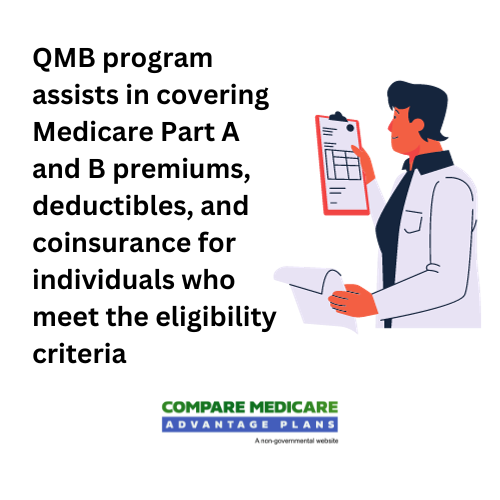Does Medicaid Cover Medicare Premiums?
If you’re wondering if Medicaid covers Medicare premiums, the direct answer is yes, with certain qualifications. Medicaid may assist with certain Medicare premiums if you are ‘dual eligible,’ meaning you qualify for both Medicaid and Medicare, which will likely be based on income and resource limits.
This article delves into the intricacies of dual eligibility, the role of Medicare Savings Programs, and how to navigate these potential benefits that could potentially offset some of your healthcare costs.
Key Takeaways
- Medicaid could assist dual-eligible individuals by potentially covering Medicare premiums, deductibles, and cost-sharing, which could significantly reduce the burden of healthcare costs for those with limited income.
- Some of the Medicare Savings Programs may offer varying levels of financial aid to individuals who do not qualify for full Medicaid benefits but may still struggle with Medicare expenses, with programs such as QMB, SLMB, QI, and QDWI tailored to specific eligibility criteria.
- Eligibility for assistance from Medicaid and Medicare Savings Programs will likely be dependent on Federal Poverty Level guidelines and state-specific rules, and individuals could apply for these programs through their state medical assistance office or the Social Security Administration.
Compare Plans in One Step!
Enter Zip Code
Medicaid and Medicare: The Connection
Medicare and Medicaid, integral parts of America’s healthcare system, could serve different populations by providing health coverage.
Medicare is a federal initiative designed primarily for individuals aged 65 and older, while Medicaid is a state-administered program that might cover certain medical expenses for individuals with limited income and resources. If an individual qualifies for both programs, this would be where the concept of ‘dual eligibility’ comes into play.

These potential benefits will likely extend beyond what Medicare covers, such as long-term services and supports, and non-emergency medical transportation. A majority of the dual-eligible individuals have been enrolled in Medicare Savings Programs, which could assist in covering certain Medicare costs.
Understanding Dual Eligibility
Individuals who meet the criteria for both Medicare and Medicaid are referred to as dual eligible. The majority of individuals become eligible for Medicare at the age of 65, but eligibility may be possible at a younger age if the individual has a disability or specific medical conditions.
To be dual eligible, an individual must meet the eligibility criteria for both Medicare and Medicaid and be enrolled in both. This might include having a limited income.
Dual eligibility could offer a significant advantage as it could allow individuals to access both Medicare and Medicaid coverage, possibly providing enhanced healthcare coverage and additional support from the state. For example, Medicaid might cover costs not included in Medicare, such as long-term care services and prescription drugs.
How Medicaid Helps with Medicare Costs
Medicaid could significantly ease the burden of Medicare costs for dual-eligible individuals. This may help cover:
- Medicare premiums
- Deductibles
Interestingly, states might have the authority to broaden the eligibility criteria for Medicare Savings Programs. This means individuals with incomes or assets surpassing the federal minimums could still qualify for assistance.
The level of income could significantly impact the type of coverage received. For instance, individuals with incomes below the federal poverty level may be eligible to receive coverage for both Medicare premiums and cost-sharing.
Medicare Savings Programs: An Overview
For those who don’t qualify for full Medicaid benefits but still need financial assistance with their Medicare costs, Medicare Savings Programs could provide a glimmer of hope. The programs will likely consist of four different types, each could be designed to cater to specific groups of beneficiaries and may offer different levels of assistance.
Qualified Medicare Beneficiary (QMB) Program

The Qualified Medicare Beneficiary (QMB) program could be an example of a Medicare Savings Program that could provide significant relief to beneficiaries.
This may assist in covering Medicare Part A and B premiums, deductibles, and coinsurance for individuals who meet the eligibility criteria.
To be eligible for the QMB program, individuals need to have an income below 100% of the Federal Poverty Level (FPL).
This means meeting the specified income and resource thresholds might be necessary to qualify. Once eligible, beneficiaries could enjoy coverage for Medicare Part A and Part B premiums, deductibles, coinsurance, and copayments, possibly providing substantial cost savings.
Specified Low-Income Medicare Beneficiary (SLMB) and Qualifying Individual (QI) Programs
The Specified Low-Income Beneficiary (SLMB) Program could be another key component of the Medicare Savings Program. This program could offer support by covering certain Medicare Part B premiums for individuals whose income falls within the range of 100-120% of the Federal Poverty Level (FPL).
The SLMB and QI programs could be instrumental in increasing healthcare accessibility and affordability for individuals with limited income and resources.
Qualified Disabled and Working Individuals (QDWI) Program
The Qualified Disabled and Working Individuals (QDWI) Program will likely aim to support disabled individuals who are working but not receiving Social Security benefits.
This program could potentially assist by covering certain Medicare Part A premiums, which could offer much-needed relief to those who are under the age of 65, have a disability, and do not qualify for premium-free Part A.
This program, along with others, could be a testament to the commitment to potentially offering financial assistance to individuals with limited income and resources, striving to make healthcare more accessible and affordable.
How to Determine Your Eligibility for Assistance
Initially, figuring out your eligibility for assistance from Medicaid and Medicare Savings Programs may seem overwhelming.
However, understanding the federal poverty level guidelines and state-specific eligibility rules could make the process much easier. These guidelines and rules will likely form the basis for determining who could qualify for these programs and the level of assistance they may receive.
Federal Poverty Level Guidelines
Eligibility for Medicaid and Medicare Savings Programs will likely depend on the Federal Poverty Level (FPL) guidelines. These guidelines might use income thresholds that may vary according to household size to determine whether an individual qualifies for assistance.

The FPL guidelines could significantly impact the eligibility for assistance programs. Specific income limits, set as a percentage of the FPL, could determine whether an individual qualifies for certain assistance programs. However, not all states strictly adhere to these guidelines.
State-Specific Medicaid Eligibility Rules
While the FPL guidelines could provide a federal standard for income eligibility, Medicaid eligibility rules may differ considerably among states. Each state will likely manage its Medicaid program within federal guidelines, which could lead to a broad spectrum of differences in eligibility criteria, potential benefit offerings, and provider reimbursement policies.
States may also consider a range of potential factors, including income, family size, and coverage by eligibility group when assessing an individual’s Medicaid eligibility.
For instance, in California, the Medicaid eligibility criteria might consider income limits based on household size and allow individuals to qualify for Medi-Cal even if they are not eligible for other programs.
Applying for Medicaid and Medicare Savings Programs
Once you’ve determined your eligibility for Medicaid and Medicare Savings Programs, the next step is to apply. The application process involves calling one of our licensed agents to enroll and possibly working with the Social Security Administration.
Contacting Your State Medical Assistance Office
When applying for Medicaid, Medicare Savings Programs, and skilled nursing facility care, your local or state medical assistance office could offer useful guidance. These offices may provide guidance and information, possibly helping you assess your eligibility for assistance and navigate the application process.
The state medical assistance offices will likely be responsible for administering Medicaid and Medicare Savings Programs. They may also provide various services that could be aimed at alleviating medical expenses, which may include potentially reducing Medicare costs and offering assistance with premiums, deductibles, copayments, and coinsurance. However, note that the specific services offered may differ from state to state.
Working with the Social Security Administration
The Social Security Administration (SSA) will likely be a key player in the application process for Medicaid and Medicare Savings Programs. The SSA may be responsible for:
- Processing applications for Original Medicare
- Offering comprehensive information about the Medicare program
- Assisting in enhancing enrollment in Medicare Savings Programs by facilitating the Extra Help application process.

Eligibility for Medicare, as determined by the SSA, includes being at least 65 years old and eligible for monthly Social Security or Railroad Retirement Board cash benefits. Furthermore, individuals who receive Social Security Disability Insurance (SSDI) benefits become eligible for Medicare after a 24-month qualifying period.
Navigating Medicare Coverage Options as a Dual Eligible
Dual eligibility might expand the range of possibilities regarding Medicare coverage. Apart from the financial assistance that could be offered by Medicaid, dual-eligible individuals may also have options when it comes to Medicare coverage, including the choice between Original Medicare and Medicare Advantage Plans, and the availability of prescription drug coverage.
Understanding Medicare Part D Prescription Drug Coverage
Medicare Part D, a voluntary benefit, could provide Medicare prescription drug coverage and may potentially decrease overall costs by covering prescription drug expenses. This coverage will likely be administered through private insurance companies that work with Medicare to offer a range of drug coverage options.

For individuals with limited income and resources, additional assistance is available through the Low-Income Subsidy program. This program could offer help in covering certain prescription drug costs under Medicare Part D, possibly enhancing the affordability of prescription drugs for eligible beneficiaries.
Choosing Between Original Medicare and Medicare Advantage Plans
You have two main choices for your health insurance coverage when it comes to Medicare: Original Medicare and Medicare Advantage Plans. Original Medicare, administered by the federal government, will likely provide a standardized level of coverage for most medically necessary services and supplies in hospitals, doctors’ offices, and other healthcare facilities, which might include hospital insurance benefits.
On the other hand, Medicare Advantage Plans, supplied by private companies, could offer a broader scope of coverage. These plans, also known as Medicare Advantage Plans, include all the services that Original Medicare covers and may sometimes provide additional benefits like dental, vision, or hearing services. However, choosing a plan will likely depend on individual needs and circumstances, and each option could have its benefits and drawbacks.
Summary
Understanding the intricacies of Medicaid and Medicare, and how they could work together to provide additional financial assistance for healthcare costs, is crucial for anyone navigating the Medicare landscape.
Whether you’re dual eligible or qualify for a Medicare Savings Program, know that help is available. The key will likely be to understand your options, assess your eligibility, and make informed decisions that best serve your healthcare needs.
Frequently Asked Questions
→ Will Medicaid pay for my Medicare Part B premium in Texas?
Yes, Medicaid in Texas might help pay for your Medicare Part B premium if you qualify based on limited income and resources.
→ How do I not pay for Medicare Part B?
To not pay for Medicare Part B, you may have to qualify for financial assistance through the Medicare Savings Programs, which could have varying eligibility criteria and income limits. Therefore, it is important to check the requirements in your state for potential assistance.
→ What is dual eligibility?
Dual eligibility refers to individuals who qualify for both Medicare and Medicaid, usually due to limited income and meeting specific eligibility criteria.
→ How does Medicaid help with Medicare costs?
Medicaid might help to cover certain Medicare premiums, deductibles, and cost-sharing for those who are dual-eligible, specifically for individuals with incomes below the federal poverty level and financial resources below specific limits. This assistance could potentially help reduce the financial burden of healthcare costs for those who qualify.
→ What are the Medicare Savings Programs?
The Medicare Savings Program could offer financial assistance for Medicare costs to individuals who do not qualify for full Medicaid benefits. There are four different types of programs, each has been designed to assist specific groups of beneficiaries.

ZRN Health & Financial Services, LLC, a Texas limited liability company



